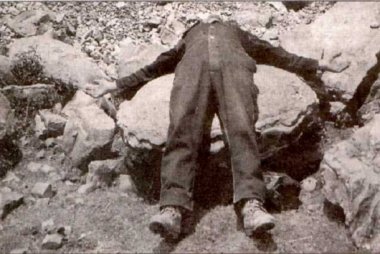My topic for this semester will be archaeology. I will be writing about interesting stuff, that was found all over the world.
In 1953 a few men were climbing Mount Everest. When they reached the top they found many petrified clams. Also in Peru, in 1990', giant fossilized clams were found 3 kilometers above sea level (see picture) . What is more, they were in closed position in both cases. Clam is a marine creature, that spend most of its time partially buried in sand on the bottom of the ocean. When it dies, muscles relax and clam opens up almost immediately. There can be only one conclusion-they must have been buried alive.I daresay, there is no other possibility than catastrophy, that occurred in past. I think worldwide flood is the best explonation for this phenomenon, because flood could bury those clams in mud, where they would fossilize. It may also explain how did they get on the mountains.

Why don't you ask your geography teacher how mountains are/were formed? You might find out (even though you should have learned it in lower secondary) that mountains formed as a result of the movement of tectonic plates which forced the material from the sea bottom to the mountain tops.
OdpowiedzUsuńActually, it's been long known that the top of Mount Everest is composed of limestone from an ancient, long-gone ocean. No flood necessary!
I didn't know my geography teacher was there when mountains were forming :D I really wrote the personal part to make it to 150 words, but I still think millions of fossilized clams in closed position aren't a result of tectonic movements.
UsuńTo be honest, I wouldn't have thought that this was the result of a flood. I think the more likely cause was the movement of tectonic plates, although I'm not entirely sure.
OdpowiedzUsuńThen what buried those clams alive? Any ideas?
UsuńAre those giant clams still alive somewhere today or they went extinct a long time ago like other prehistoric species?
OdpowiedzUsuńThey went extinct for sure but I don't know when.
Usuń